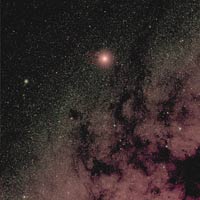The spacecraft will reach the planet Mars and assist in its gravity for acceleration on February 25

The European Space Agency's Rosetta spacecraft making its way around the Solar System for a 2014 encounter with a comet recently took the first close-up photograph of the asteroid Lutetia (21-Lutetia). Rosetta makes its way to a rendezvous with the planet Mars on February 25, 2007 to help with its gravity.
During its journey towards its destination, comet Churyumov-Gerasimenko (67P Churyumov-Gerasimenko), the Rosetta spacecraft is supposed to study two asteroids Stanis (2867) and Lutetia, both in the main asteroid belt between Mars and Jupiter. Asteroids, like comets, carry interesting information about the origin of the solar system - a better understanding of which is one of the main goals of the Rosetta mission. The two asteroids are due for close-up and photo visits in September 2008 and July 2010 respectively, but Rosetta's scientists have already taken an opportunity to gather information about them. The opportunity will allow scientists to better prepare for the extensive observation operation of the two asteroids in due course.
Stannis was imaged by Rosetta on March 11, 2006, and Lutetia was imaged in a 36-hour observing opportunity on January 2 and 3, 2007, when the spacecraft was 245 million kilometers from the asteroid. Orsis - the high-frequency camera on board Rosetta was specially activated for these observations.
The asteroid Stennis will receive a return visit from Rosetta on September 5, 2008 - photographed from a distance of over 1,700 kilometers, at a relatively low speed of about 9 kilometers per second during Rosetta's first pass through the asteroid belt. On July 10, 2010, Rosetta will approach the asteroid Lutetia, when it will pass at a distance of about 3,000 kilometers from it at a speed of about 15 kilometers per second.
